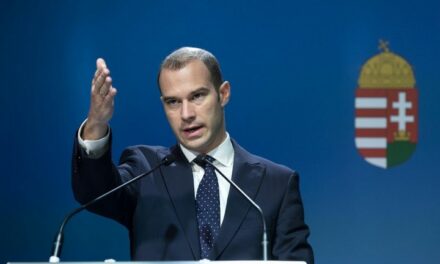Romanians would wear not only Hunyadi, but also Hungarian folk costumes from Kalotaszeg.
Since the change of regime, more and more professionals have been smiling at Romanian theories, including Romanians themselves, but Romanian historical views have an advantage over Hungarian ones in terms of what they can make people believe in Western Europe - Artúr Köő responded to Magyar Nemzet that the according to the Romanians, we Hungarians appropriated János Hunyadi from them. Hunyadi's Romanian origins are primarily based on the fact that our eastern neighbors were born in Havasalföld. István Nemeskürty, a teacher's assistant at the Teacher Training Faculty of the NKE, and a research associate at the Hungarian Research Institute, spoke in detail about the roots and causes of the falsification of Romanian history, but also outlined a possible solution.
According to Romanians, János Hunyadi was Romanian because he was born in Havasalföld. I always say that just because a hamster is born in an aquarium, it does not die - Artúr Köő responded to Magyar Nemzet to the article published in the largest Romanian daily, according to which we Hungarians appropriated János Hunyad from them.
Did Hunyadi call himself Hungarian?
NKE Nemeskürty István Nemeskürty, a teaching assistant at the Faculty of Teacher Education, and a research associate at the Hungarian Research Institute explained: Havasalföld was an ethnically colorful region in the Middle Ages. Informed: an archaeogenetic research , the results of which will reveal the bloodline of the family.
According to my assumption, kun kinship can be displayed or shown
he detailed. The researcher believes that the Romanian theories according to which King Mátyás was the first Romanian king on the throne of Hungary, or that János Hunyadi was Romanian, are all from the 19th century. they were born in the middle of the 20th century, when the Romanians tried to create their own, "glorious" history in the spirit of nationalism.
You have to look at the language in which the given historical person wrote and how he defined himself. In the case of János Hunyadi, it is clear that he used Hungarian and Latin and never called himself Romanian
he explained.
The subject of the joke is the Romanian theory
The Dacian-Roman continuity or the theory of Dacian-Romanian continuity is a theory about the origin of the Romanians, according to which the present-day Romanian population was formed from the fusion of Transylvanian Dacians and Roman settlers after the Romans conquered Dacia in 106 and the indigenous peoples Romanized, i.e. took over Latin culture and language. Consequently, according to the theory, the Romanian people have been continuously present in Transylvania for nearly two thousand years. Artúr Köő explained:
this origin theory is also the XVIII. end of the century, XIX. it was born and formed during the period of national romanticism at the beginning of the 20th century among the leaders of Romania, and in later Romania it enjoyed and enjoys support at the political level.
- The Daco-Romanian continuity is considered a joke even in Western Europe by the profession, but obviously for the Romanians, enforcing this is important from the point of view that they can put the Romanian presence in Transylvania ahead of the Hungarian presence - he explained. The expert explained: XIII. The Tatar invasion in the 19th century primarily decimated the Hungarian population in the Carpathian Basin, and later epidemics mainly affected areas inhabited by Hungarians. And the nobles were in great need of labor, which is why Romanians appeared in Transylvania in increasing numbers. Artúr Köő informed:
the Romanians most likely infiltrated from the Balkans and gradually became the majority in Transylvania.
- They consider it a greater honor to associate themselves with the great Roman Empire. It is greater than the mere truth that they came to Transylvania from the Balkans, in such a way that the Byzantine emperor distracted them because they did not pay taxes, he elaborated.
Digital revision
The expert explained: since the regime change, more and more professionals, including Romanians themselves, are smiling at Romanian theories.
- Before the nineties, in Ceausescu's Romania, enormous attention was paid to the Dacian-Romanian continuity theory taking root. Ceausescu also made propaganda out of the Anonymus gesture, which wrote about the fact that the Blaks were already present in the Carpathian basin during the conquest. But the Blaks came from the east and the Vlachs from the Balkans, and they are not the same, he said. He added: moreover, the work of Anonymus was written hundreds of years after the conquest of the country, so it can be considered a secondary source. Artúr Köő recalled:
even in Ceausescu's nationalist Romania, there were researchers who could not die without saying: the whole Dacian-Roman continuity is nonsense.
He noted that Romanian views of history have an advantage over Hungarian ones in terms of what they can make people believe in Western Europe. In Hungary, the intention of communism was to suppress the Hungarian position, while the Romanian one was to strengthen the Romanian one.
However, in today's world, more and more people watch short videos on TikTok and Facebook, and less and less people read. We must use these opportunities to overcome our disadvantage
he explained. According to the expert, Romanians act similarly in many areas in Romania. He explained that he was born in Transylvania, and he recently experienced that
Around Kalotaszeg, Romanians are buying Hungarian national costumes en masse and trying to combine them with Romanian national costumes, claiming that this is their national costume.
But from the point of view of ethnography, it can be perfectly demonstrated who had what national costume. The Romanian one was much less colorful than the Hungarian one, he informed.
The full article HERE .
Cover photo: According to Romanians, the film about János Hunyadi is a manifestation of Hungarian soft power (Photo: Rise of the Raven/Leo Pinter)













